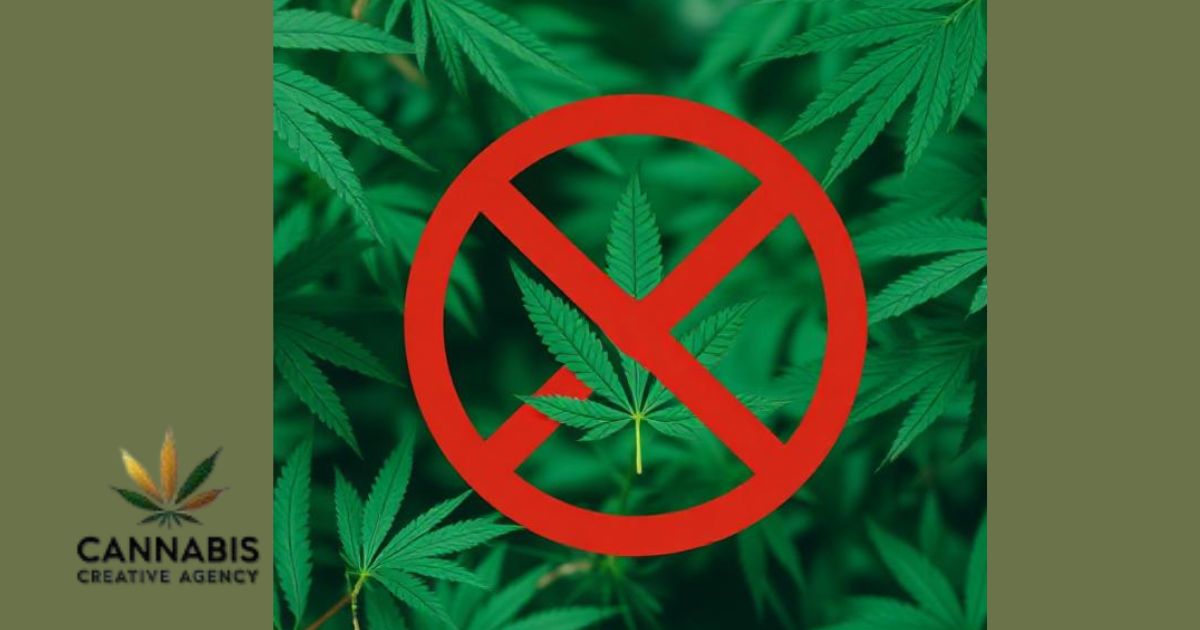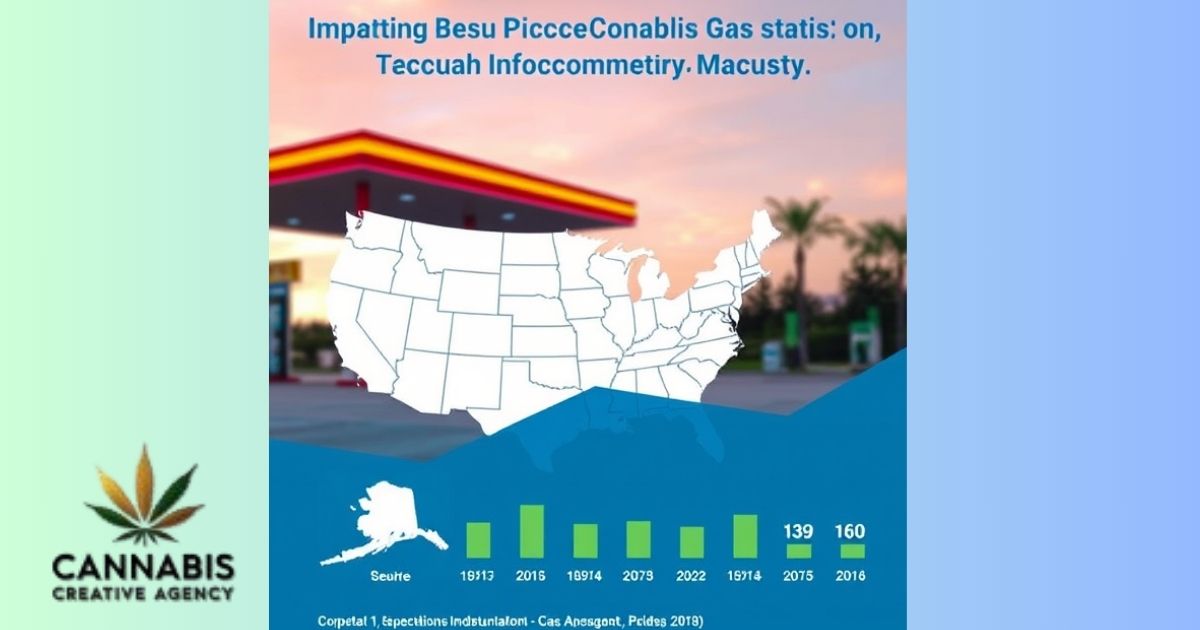The Cannabis Marketing Mistakes to Avoid has experienced explosive growth in recent years, fueled by increased legalization and changing public perceptions. With the expanding market, businesses are vying for attention, making it a dynamic and highly competitive sector.
Importance of effective marketing strategies in a competitive landscape
Effective marketing strategies are essential for standing out in such a fast-paced and crowded market. Businesses must be strategic, innovative, and compliant with industry regulations to attract customers and build a loyal following.
Purpose of the blog post: to highlight common marketing mistakes and provide guidance
This blog post aims to identify common marketing mistakes cannabis businesses make and offer practical advice on avoiding them. By highlighting key pitfalls and providing actionable insights, we’ll help businesses develop more substantial, more successful marketing strategies.
Mistake 1: Neglecting Compliance and Regulations
Overview of cannabis marketing regulations
The Cannabis Marketing Mistakes to Avoid is heavily regulated, with strict rules governing advertising, promotions, and messaging. Regulations vary by region but often include restricting targeting minors, misleading claims, and using specific imagery or language in marketing materials. Understanding these rules is crucial for staying within legal boundaries.
Consequences of non-compliance
Failing to comply with cannabis marketing regulations can lead to serious consequences, including hefty fines, legal action, or even the suspension of business licenses. Non-compliance harms a brand’s reputation and can result in costly setbacks that may be difficult to recover from.
C. Tips for staying informed and compliant
To avoid pitfalls, cannabis businesses should regularly review local and federal regulations, consult with legal experts, and stay updated on industry changes. Creating an internal compliance checklist for all marketing materials and training staff on the latest guidelines can help ensure all marketing efforts remain within the law.
Mistake 2: Failing to Understand the Target Audience
Importance of market research
Understanding your target audience is the foundation of any successful marketing strategy. Conducting thorough market research helps you identify consumer needs, preferences, and behaviours, allowing you to tailor your messaging and offerings to resonate with the right people.
Common misconceptions about cannabis consumers
There are many misconceptions about cannabis users, who are often portrayed as a homogenous group. Cannabis consumers come from all walks of life, with diverse backgrounds, Cannabis & Black History Month interests, and reasons for use. Overgeneralizing or relying on outdated stereotypes can lead to ineffective marketing that misses the mark.
Strategies for identifying and engaging the target demographic
To effectively reach your audience, start segmenting them based on age, lifestyle, usage patterns, and values. Utilize surveys, focus groups, and analytics to gather insights into their preferences and pain points. Once identified, create personalized content, use the proper channels, and engage with your audience through authentic, relatable messaging that speaks to their unique needs and desires.
Mistake 3: Overlooking Branding Consistency
Branding consistency is crucial in building consumer trust, especially in the cannabis industry, where businesses must navigate strict regulations and shifting public perceptions. A strong, cohesive brand helps establish credibility, differentiates a company from competitors, and fosters customer loyalty.
The Role of Branding in Consumer Trust
A consistent brand identity—including logos, colour schemes, messaging, and packaging—creates a sense of reliability and professionalism. Consumers are likelier to engage with brands that present a unified image across all platforms, from social media and websites to in-store displays and product packaging. Consistency reassures customers about the quality and safety of cannabis products, which is particularly important in a market that is still overcoming stigma and misinformation.
Examples of Inconsistent Branding in the Cannabis Industry
Many cannabis companies struggle with branding consistency, often due to rapid expansion, unclear messaging, or an attempt to appeal to multiple demographics at once. Some common examples of inconsistent branding include:
- Mismatched logos or colour schemes across product lines and marketing materials.
- Incoherent messaging occurs when a company’s tone shifts dramatically between platforms (e.g., it is professional on the website but overly casual on social media).
- Packaging disparities, where different product lines lack a unified aesthetic, lead to consumer confusion.
- Failure to align with the target audience, such as using luxury branding for budget-conscious consumers or vice versa.

Best Practices for Maintaining a Cohesive Brand Image
To build a strong and trustworthy brand, cannabis companies should implement the following best practices:
- Develop brand guidelines that define logos, typography, colour palettes, and messaging tone.
- Ensure uniformity across all touchpoints, including packaging, digital presence, and retail environments.
- Regularly audit branding efforts to identify inconsistencies and make necessary adjustments.
- Train employees and marketing teams to reinforce the brand’s core values and aesthetics.
- Engage with customers consistently through social media and other channels, maintaining a steady voice and visual identity.
By prioritizing branding consistency, cannabis businesses can strengthen consumer trust, improve recognition, and establish long-term success in a competitive and evolving industry.
Mistake 4: Ignoring Digital Marketing Opportunities
In the rapidly evolving cannabis industry, a strong digital presence is essential for brand awareness, customer engagement, and long-term growth. Traditional advertising channels like TV and print are often restricted, so cannabis businesses must leverage digital marketing to reach and educate their target audience. Ignoring this opportunity can leave brands invisible in a competitive market.
The Significance of Online Presence in Cannabis Marketing
A well-crafted online presence helps cannabis businesses build credibility, connect with consumers, and drive sales. Since regulations often limit where and how cannabis can be advertised, digital marketing—including websites, social media, email campaigns, and search engine optimization (SEO)—offers a powerful way to reach potential customers while staying compliant with industry restrictions. A strong digital presence also allows brands to educate consumers, address stigma, and establish themselves as trusted authorities in the market.
Common Digital Marketing Pitfalls
Many cannabis brands struggle with digital marketing due to industry-specific challenges and a lack of strategic planning. Some common mistakes include:
- Neglecting SEO makes it harder for potential customers to discover the brand online.
- Over-reliance on social media without a clear strategy leads to inconsistent engagement and potential account bans due to platform policies.
- Ignoring email marketing, which remains one of the most effective ways to nurture customer relationships.
- Failing to create valuable content, such as blogs, educational videos, or customer testimonials, can help boost organic traffic and brand trust.
- Non-compliance with advertising regulations, resulting in ad takedowns or penalties on platforms like Google and Meta.
Effective Digital Marketing Strategies for Cannabis Businesses
To maximize digital marketing opportunities while staying compliant, cannabis businesses should focus on the following:
- Investing in SEO to improve website visibility and attract organic traffic.
- Creating high-quality content that educates and engages, including blog posts, videos, and infographics.
- Developing a strategic social media plan prioritizes organic engagement, influencer partnerships, and community-building rather than direct promotion.
- Utilizing email marketing to maintain direct communication with customers and build brand loyalty.
- Exploring alternative digital advertising platforms, such as cannabis-friendly networks, affiliate marketing, or programmatic advertising tailored to industry regulations.
By embracing digital marketing and adapting to evolving online regulations, cannabis businesses can strengthen their brand, attract new customers, and establish a competitive edge in the marketplace.
Mistake 5: Underestimating the Power of Community Engagement
Building strong relationships with the community is essential for long-term success in the cannabis industry. Unlike traditional industries, cannabis businesses must navigate complex regulations, social stigma, and evolving consumer perceptions. Failing to engage with the community can result in lost brand loyalty, advocacy, and sustainable growth opportunities.
The Importance of Building Relationships Within the Community
Community engagement goes beyond marketing, and fosters trust credibility, and consumer loyalty. By actively participating in local initiatives, supporting advocacy efforts, and engaging with customers personally, cannabis businesses can position themselves as responsible and valuable contributors to society. A strong community presence can help companies overcome regulatory hurdles and gain local government and consumer support.
Examples of Successful Community Engagement Initiatives
Several cannabis companies have successfully built strong community ties through strategic engagement efforts. Some notable examples include:
- Hosting educational events to inform the public about cannabis benefits, regulations, and responsible consumption.
- Partnering with local organizations to support social equity programs, expungement clinics, or medical cannabis research.
- Supporting sustainability initiatives, such as eco-friendly packaging, recycling programs, or environmental cleanups.
- Sponsoring community events and collaborating with local businesses to create a positive industry image.
- Engaging in social media discussions, responding to customer feedback, and promoting industry advocacy efforts.
Tips for Fostering Community Connections
To build meaningful relationships within the community, cannabis businesses should:
- Be authentic and transparent in their mission, values, and business practices.
- Engage in philanthropy and advocacy by supporting social justice initiatives and cannabis policy reform.
- Create spaces for dialogue, such as hosting Q&A sessions, town halls, or customer appreciation events.
- Leverage social media and local press to share community involvement efforts and highlight positive impact stories.
- Encourage customer participation through loyalty programs, user-generated content, or volunteering opportunities.
By prioritizing community engagement, cannabis brands can build trust, enhance their reputation, and create a loyal customer base that supports their long-term success.
Measuring Marketing Success
Tracking and analyzing marketing performance is crucial for cannabis businesses to refine strategies, optimize budgets, and maximize impact. Without proper measurement, brands risk wasting resources on ineffective tactics while missing growth opportunities. Given the unique restrictions in cannabis marketing, understanding what works—and what doesn’t—is essential for long-term success.
Importance of Tracking Marketing Performance
Marketing success isn’t just about increasing brand awareness—it’s about ensuring that campaigns drive actual business results. By consistently monitoring performance, cannabis companies can:
- Identify which strategies generate the highest return on investment (ROI).
- Adjust campaigns in real-time to improve effectiveness.
- Ensure compliance with advertising regulations by tracking engagement and ad performance.
- Understand consumer behaviour, preferences, and purchasing trends.
Without data-driven insights, cannabis brands may struggle to scale effectively in an increasingly competitive market.
Key Performance Indicators (KPIs) for Cannabis Marketing
To measure success, businesses should focus on relevant KPIs that align with their marketing goals. Some essential KPIs for cannabis marketing include:
- Website traffic (organic, referral, and direct) to gauge online visibility.
- Search engine rankings and SEO performance for targeted keywords.
- Social media engagement (likes, shares, comments, follower growth) to assess brand awareness.
- Email marketing metrics (open rates, click-through rates, conversions) for customer retention.
- Customer acquisition cost (CAC) to evaluate marketing efficiency.
- Return on ad spend (ROAS) to measure paid advertising effectiveness.
- In-store foot traffic and sales growth for dispensaries and brick-and-mortar businesses.
Tracking these metrics provides a clear picture of marketing effectiveness and highlights areas for improvement.
Tools and Techniques for Measuring Success
Cannabis businesses can leverage various tools and techniques to monitor and analyze marketing performance, including:
- Google Analytics tracks website traffic, user behaviour, and conversion rates.
- SEO tools like SEMrush, Ahrefs, or Moz to measure search performance.
- Social media analytics from platforms like Instagram, LinkedIn, and Twitter to assess audience engagement.
- Email marketing software such as Mailchimp or Klaviyo to analyze campaign performance.
- Customer relationship management (CRM) systems to track lead generation and sales.
- Survey and feedback tools to collect direct insights from customers.
By implementing a structured approach to measuring success, cannabis businesses can make data-driven decisions, refine their strategies, and drive sustainable growth in an evolving industry.
Future Trends in Cannabis Marketing
As the cannabis industry evolves, so do the marketing strategies needed to stay competitive. With shifting regulations, technological advancements, and changing consumer preferences, businesses must stay ahead of emerging trends to remain relevant and practical. Forward-thinking cannabis brands that embrace innovation and adaptability will position themselves for long-term success.
Emerging Trends and Innovations in the Industry
The cannabis marketing landscape continuously evolves, with new trends shaping how brands connect with consumers. Some key emerging trends include:
- Personalization and AI-driven marketing – Using artificial intelligence (AI) and data analytics to deliver personalized product recommendations and targeted advertising.
- Influencer and community-based marketing – Partnering with cannabis influencers and brand ambassadors to build trust and expand reach.
- Interactive and immersive experiences – Leveraging augmented reality (AR), virtual reality (VR), and live-streamed events to engage consumers.
- Sustainability and eco-conscious branding – Consumers are increasingly drawn to brands prioritizing environmentally friendly practices and sustainable packaging.
- Blockchain and transparency – Using blockchain technology enhances product traceability and builds consumer trust.
- New social media strategies – Navigating strict advertising policies by leveraging cannabis-friendly platforms and creating engaging, compliant content.
How to Adapt Marketing Strategies to Stay Ahead
To remain competitive in the evolving cannabis market, businesses should:
- Stay informed on regulatory changes to ensure marketing efforts comply with shifting laws.
- Experiment with new digital platforms that offer cannabis-friendly advertising opportunities.
- Focus on storytelling and authenticity to connect with consumers on a deeper level.
- Optimize for voice search and AI-driven discovery as more consumers use smart devices to research products.
- Leverage data and analytics to refine strategies and make informed marketing decisions.
- To reach a broader audience, diversify marketing channels, including in-person events, podcasts, and educational content.
The Importance of Continuous Learning and Adaptation
The cannabis industry is dynamic, requiring brands to stay agile and continuously educate themselves on emerging trends. Businesses that prioritize ongoing learning can:
- Anticipate shifts in consumer behaviour and adjust strategies accordingly.
- Embrace new marketing technologies to enhance engagement and brand visibility.
- Foster a culture of innovation by encouraging creative, data-driven marketing approaches.
- To stay ahead, network within the industry, attend conferences, join trade organizations, and collaborate with other businesses.
By staying proactive and embracing change, cannabis brands can future-proof their marketing efforts, drive sustained growth, and maintain a competitive edge in this fast-growing industry.
Conclusion
The cannabis industry presents unique challenges and opportunities for marketers. As competition grows and regulations evolve, businesses must navigate these complexities with strategic, well-executed marketing efforts. Avoiding common pitfalls and embracing best practices will help cannabis brands build strong, lasting connections with consumers.
Recap of the Five Key Mistakes to Avoid
Throughout this discussion, we’ve highlighted five critical mistakes that cannabis businesses should avoid:
- Neglecting Market Research – Failing to understand target audiences and industry trends can result in ineffective marketing strategies.
- Ignoring Compliance and Regulations – Overlooking advertising restrictions can lead to fines, account bans, or reputational damage.
- Overlooking Branding Consistency – A disjointed brand image weakens consumer trust and recognition.
- Ignoring Digital Marketing Opportunities – A lack of focus on SEO, social media, and content marketing can limit brand visibility and growth.
- Underestimating the Power of Community Engagement – Strong relationships with customers and local communities drive loyalty and advocacy.
By recognizing these common mistakes, businesses can refine their approach and create more effective marketing strategies.
Encouragement to Implement Best Practices for Successful Marketing
Success in cannabis marketing requires creativity, compliance, and adaptability. Businesses should:
- Develop a data-driven marketing strategy based on consumer insights and market trends.
- Prioritize compliance and transparency to avoid legal pitfalls.
- Build a strong, cohesive brand identity that resonates with target audiences.
- To expand reach, leverage digital marketing channels, including SEO, social media, and email marketing.
- Foster authentic community engagement to establish trust and long-term relationships.
By implementing these best practices, cannabis businesses can stand out in a competitive marketplace and drive sustainable growth.
Final Thoughts on the Evolving Landscape of Cannabis Marketing
Cannabis marketing constantly evolves, with new technologies, regulations, and consumer behaviours shaping the industry. Brands that stay informed, adaptable, and innovative will be best positioned for success. As legalization expands and public perception shifts, the most successful cannabis businesses will embrace ethical marketing, prioritize education, and continuously refine their strategies.
By learning from past mistakes and proactively adapting to industry changes, cannabis brands can thrive in this dynamic market, fostering long-term success in an ever-growing industry.










